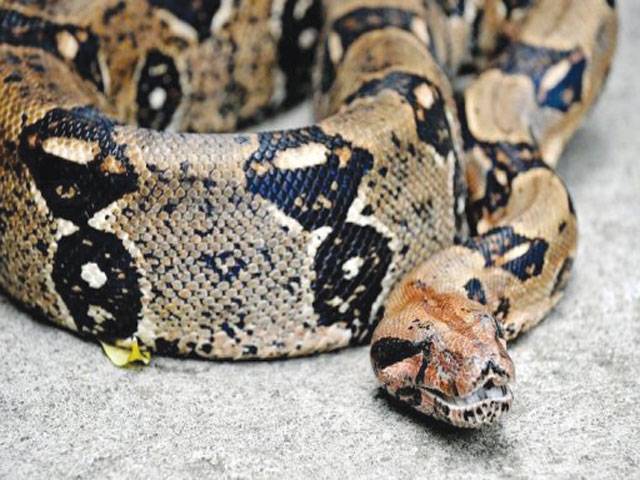PARIS - Boa constrictors can sense the heartbeat of their quarry as they suffocate it, thus giving themselves the signal to know when the prey is dead, scientists say.
In a study published on Wednesday in the journal Biology Letters, snake experts at Dickinson College in Carlisle, Pennsylvania pondered how the boa can tell when its target is lifeless and can then be swallowed.
Timing the constriction is vital for these snakes.
Squeezing is a huge drain on their energy reserves, for their metabolic rate rises sevenfold during the operation. And while they are coiled around the prey, they themselves are vulnerable to other predators.
The team used a clever idea — “warm cadaveric rats” — to monitor the boas. These were lab rats that had been humanely killed, frozen and then re-warmed to 38 degrees Celsius (100.4 degrees Fahrenheit) using an electric blanket. The rodents’ bodies were then fitted with two tiny gauges: a sensor to monitor external pressure and a replica heart, comprising a water-filled bulb that was connected by a tube to an external pump, which imitated a heartbeat. Primed for action, the hi-tech rats were placed within striking range of seven captive-born snakes which had never been exposed to live prey and nine wild-caught counterparts. The herpetologists carried out three experiments, each time controlling the rat’s fake heartbeat, to see how long the boa kept up its squeeze. When they shut off the heartbeat for 10 minutes, the snakes continued their constriction for another seven minutes or so and then released the rat, presuming it to be dead.
Thursday, April 18, 2024
Snakes sense prey’s fading heart

Taylor Swift fans lose £1m in scams
April 18, 2024
Qawwal Aziz Mian remembered on 82nd birth anniversary
April 18, 2024
Climate change will make you poorer, says a new report
April 18, 2024
Political Reconciliation
April 16, 2024
Pricing Pressures
April 16, 2024
Western Hypocrisy
April 16, 2024
Policing Reforms
April 15, 2024
Storm Safety
April 15, 2024
Workforce inequality
April 17, 2024
New partnerships
April 17, 2024
Shikarpur crisis
April 17, 2024
Peace quest
April 17, 2024
Democratic harmony
April 16, 2024
ePaper - Nawaiwaqt
Advertisement
Nawaiwaqt Group | Copyright © 2024





